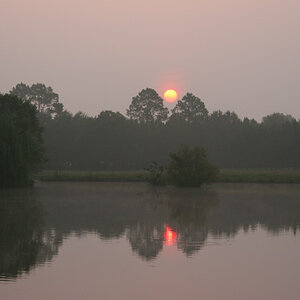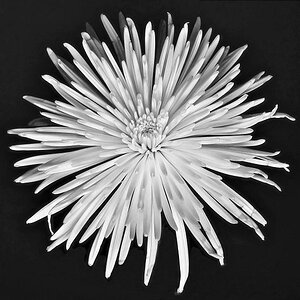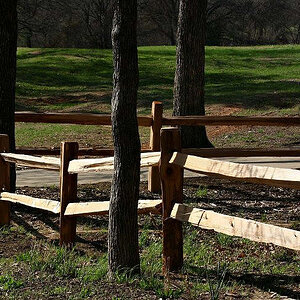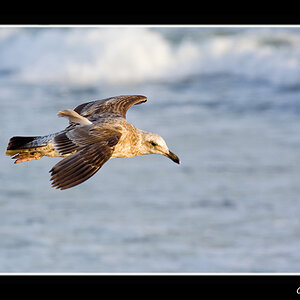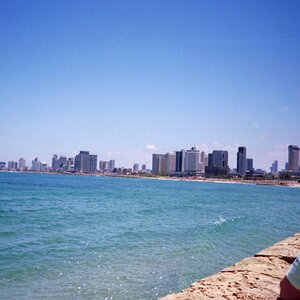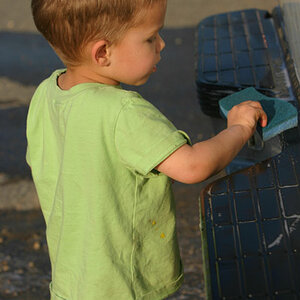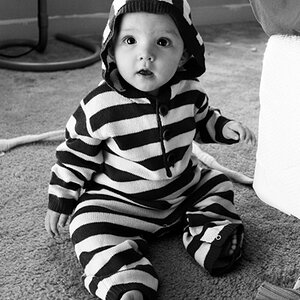Navigation
Install the app
How to install the app on iOS
Follow along with the video below to see how to install our site as a web app on your home screen.

Note: This feature currently requires accessing the site using the built-in Safari browser.
More options
You are using an out of date browser. It may not display this or other websites correctly.
You should upgrade or use an alternative browser.
You should upgrade or use an alternative browser.
fill flash
- Thread starter ketan
- Start date
TamiyaGuy
No longer a newbie, moving up!
- Joined
- Jun 25, 2007
- Messages
- 1,078
- Reaction score
- 0
- Location
- Chelmsford, UK
- Can others edit my Photos
- Photos OK to edit
I think fill flash is designed to be used in daylight, where the background is much brighter than the subject. The flash lights the subject, but doesn't affect the background, leaving you with a well-exposed photograph.
CWA_JGEISINGER
TPF Noob!
- Joined
- Oct 23, 2007
- Messages
- 140
- Reaction score
- 0
- Can others edit my Photos
- Photos NOT OK to edit
fill flash is used outdoors to light up your subject when you also want to have the sky and background exposed as well.
how you acomplish this is the following:
set your flash to automatic
then point it strait at your subject
use the meter in you camera and set your shutter speed and aperture to expose for the sky.
take the shot
your result is a nicely exposed sky or background and also a well exposed subject.
how you acomplish this is the following:
set your flash to automatic
then point it strait at your subject
use the meter in you camera and set your shutter speed and aperture to expose for the sky.
take the shot
your result is a nicely exposed sky or background and also a well exposed subject.
JerryPH
No longer a newbie, moving up!
- Joined
- Oct 14, 2007
- Messages
- 6,111
- Reaction score
- 15
- Location
- Montreal, QC, Canada
- Can others edit my Photos
- Photos NOT OK to edit
Fill flash is flash that is used ANYWHERE and ANYTIME and it's main reason for use is to simply remove the shadows away from your subject without affecting the surrounding area.
Outside, when used to shoot people that are backlit you will be able to see faces instead of silhouettes.
Inside, when used to shoot people that are in lower lighting, you are able to properly expose the subject without significantly adding to the current lighting conditions.
Outside, when used to shoot people that are backlit you will be able to see faces instead of silhouettes.
Inside, when used to shoot people that are in lower lighting, you are able to properly expose the subject without significantly adding to the current lighting conditions.
Village Idiot
No longer a newbie, moving up!
- Joined
- Mar 20, 2008
- Messages
- 7,269
- Reaction score
- 406
- Location
- Shepherdsturd, WV / Almost, MD
- Can others edit my Photos
- Photos NOT OK to edit
Fill flash is flash that is used ANYWHERE and ANYTIME and it's main reason for use is to simply remove the shadows away from your subject without affecting the surrounding area.
Outside, when used to shoot people that are backlit you will be able to see faces instead of silhouettes.
Inside, when used to shoot people that are in lower lighting, you are able to properly expose the subject without significantly adding to the current lighting conditions.
I was wondering if some one was going to say this.
Mystwalker
TPF Noob!
- Joined
- Jan 25, 2008
- Messages
- 544
- Reaction score
- 0
- Can others edit my Photos
- Photos NOT OK to edit
When setting apperture and shutter to expose for sky ... do I need to take a reading from sky first then use manual mode to set apperture and shutter?
Then refocus on the subject (press botton midway?) ... I ignore the meter readings because I've already taken reading for sky? The "fill flash" will make up for the underexposed subject?
Then refocus on the subject (press botton midway?) ... I ignore the meter readings because I've already taken reading for sky? The "fill flash" will make up for the underexposed subject?
Village Idiot
No longer a newbie, moving up!
- Joined
- Mar 20, 2008
- Messages
- 7,269
- Reaction score
- 406
- Location
- Shepherdsturd, WV / Almost, MD
- Can others edit my Photos
- Photos NOT OK to edit
When setting apperture and shutter to expose for sky ... do I need to take a reading from sky first then use manual mode to set apperture and shutter?
Then refocus on the subject (press botton midway?) ... I ignore the meter readings because I've already taken reading for sky? The "fill flash" will make up for the underexposed subject?
Supposedly.
But you can meter in Manual mode. Meter the sky, shoot the person.
Phillip J. Flash would be prowd.
asfixiate
TPF Noob!
Village. I started thinking you were a hard a$$ on this forum but I'm slowly realizing you are funny as hell as well as pretty savvy. Thanks for the comic relief.
Village Idiot
No longer a newbie, moving up!
- Joined
- Mar 20, 2008
- Messages
- 7,269
- Reaction score
- 406
- Location
- Shepherdsturd, WV / Almost, MD
- Can others edit my Photos
- Photos NOT OK to edit
Village. I started thinking you were a hard a$$ on this forum but I'm slowly realizing you are funny as hell as well as pretty savvy. Thanks for the comic relief.
Hard ass?
No.
Opinionated, sometimes arrogant, sarcastic, humorous, and right; yes.
My idea of comedy doesn't conform to the norm. I don't know how my friends put up with me. I guess I should have been British.
Village Idiot
No longer a newbie, moving up!
- Joined
- Mar 20, 2008
- Messages
- 7,269
- Reaction score
- 406
- Location
- Shepherdsturd, WV / Almost, MD
- Can others edit my Photos
- Photos NOT OK to edit
When setting apperture and shutter to expose for sky ... do I need to take a reading from sky first then use manual mode to set apperture and shutter?
Then refocus on the subject (press botton midway?) ... I ignore the meter readings because I've already taken reading for sky? The "fill flash" will make up for the underexposed subject?
Actually, after thinking about this, yes: ignore the meter reading of the subject. The metering will help the camera and flash and everything determine the proper exposure it you've pre metered the sky and then are meter off the subject.
The extent of most of my TTL shooting is done in doors and at informal events. Most of the work involving fill flash to complement ambient has been done with a manual flash. But the technique is the same with the only exception being that the flash power and distance is manually controlled vs. automatically.
JerryPH
No longer a newbie, moving up!
- Joined
- Oct 14, 2007
- Messages
- 6,111
- Reaction score
- 15
- Location
- Montreal, QC, Canada
- Can others edit my Photos
- Photos NOT OK to edit
I was wondering if some one was going to say this.
Why not say it like that? One uses a flash to get the pic that you ordinarily could not.
Given the opportunity or choice... I prefer to get the pic using artificial light rather than miss the opportunity becuase I missed the best time of the day to get it via ambient light, get a noise-filled pic due to too high ISO or even get things in the pic that I do not want becuase I did not know how to control DOF via lighting.
Finally, I would use a flash to give me effects that under ordinary circumstances are impossible to get (ie: 2 or more natural ambient light sources are not normally available in single sun galaxy... lol).
JerryPH
No longer a newbie, moving up!
- Joined
- Oct 14, 2007
- Messages
- 6,111
- Reaction score
- 15
- Location
- Montreal, QC, Canada
- Can others edit my Photos
- Photos NOT OK to edit
Actually, after thinking about this, yes: ignore the meter reading of the subject.
Using the meter and camera controlled fill flash results are quite varied. If your camera has spot metering and you point it on the client, the camera's job is to properly expose the subject based on an algorithm created and programmed into the camera by some foreign engineer.
Most of the time I get better results when I am in control of my flash and camera. I do this in 2 ways:
- Camera and flash are both set to manual
- flash is removed off camera and placed in a location that enhances the effect I want.
For beginners, both concepts are challenging but the results are much more rewarding and not all that hard to learn with practice and time.
I use a meter, but not the camera meter. I sometimes use an extermal meter so that I know light strengths and be able to better/faster get the results that I am looking for when using techniques a little more advanced.
asfixiate
TPF Noob!
Jerry
What is your confidence level of the camera's meter? I agree my shots look better when I follow it but would like to get the best results possibly.
Any recommendations for brands of meters?
What is your confidence level of the camera's meter? I agree my shots look better when I follow it but would like to get the best results possibly.
Any recommendations for brands of meters?
JerryPH
No longer a newbie, moving up!
- Joined
- Oct 14, 2007
- Messages
- 6,111
- Reaction score
- 15
- Location
- Montreal, QC, Canada
- Can others edit my Photos
- Photos NOT OK to edit
Modern digital camera meters? Quite high. Now, mind you, they are designed to meter ambient light or flash coming from ONE location... from on top of or built-into your camera (technologies like CLS aside).
The moment you take the flash off camera, the camera has no way to easily control the flash or to meter for the off camera flash since it is designed to meter for ambient or for a device it can control, so thats when an external meter is needed.
Mind you, an external meter is not mandatory, but it just takes so much longer if you chimp your way from pic to pic.
The moment you take the flash off camera, the camera has no way to easily control the flash or to meter for the off camera flash since it is designed to meter for ambient or for a device it can control, so thats when an external meter is needed.
Mind you, an external meter is not mandatory, but it just takes so much longer if you chimp your way from pic to pic.
Village Idiot
No longer a newbie, moving up!
- Joined
- Mar 20, 2008
- Messages
- 7,269
- Reaction score
- 406
- Location
- Shepherdsturd, WV / Almost, MD
- Can others edit my Photos
- Photos NOT OK to edit
Modern digital camera meters? Quite high. Now, mind you, they are designed to meter ambient light or flash coming from ONE location... from on top of or built-into your camera.
The moment you take the flash off camera, the camera has no way to easily control the flash or to meter for the off camera flash since it is designed to meter for ambient or for a device it can control, so thats when an external meter is needed.
Mind you, an external meter is not needed, but it just takes so much longer if you chimp your way from pic to pic.
Or learn how to use guide numbers.
Similar threads
- Replies
- 8
- Views
- 158

